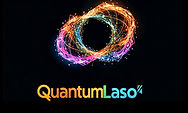Dipolar quantum logic for freely-rotating trapped molecular ions
- mansour ansari

- Oct 12, 2021
- 3 min read
Updated: Oct 13, 2021
The road to scale up!
Among many quantum computing architectures, the super conducting, diamond atoms*, cold atoms, and a few more - all quantum architectures have been explored to date; the trapped atomic ions have demonstrated the lowest single- and two-qubit gate error rates, as well as single-qubit storage times exceeding 10 minutes .
For example, at ionQ, a fully programmable 32 qubit quantum computer based on trapped ions have already been constructed and working via the cloud. They are working to scale this 32 qubit system to the next number, perhaps 64 or 70 plus qubits in near future and to a million qubit, running at high fidelity by 2025 and beyond. These systems rely on the quantum nature of the motion of the trapped ions to produce entanglement between qubits.
However, an unanticipated phenomenon, dubbed anomalous heating, which causes the trapped ion qubits to spontaneously heat when held near a surface has slowed the scaling of ion trap quantum computers to a large number of qubits.
This group offer a possible solution by offering We give suggestions for how Materials-based integration and noise-mitigation strategies to enable the next generation of trapped-ion materials scientists and trapped-ion technologists can work together to develop mat quantum computers. The group at the IonQ probably already figured out the solution to mitigate motional heating.
Here is the abstract: This group offers "suggestions."
Trapped-ion quantum information processors store information in atomic ions maintained in position in free space by electric fields. Quantum logic is enacted through manipulation of the ions’ internal and shared motional quantum states using optical and microwave signals. Although trapped ions show great promise for quantum-enhanced computation, sensing and communication, materials research is needed to design traps that allow for improved performance by means of integration of system components, including optics and electronics for ion-qubit control, while minimizing the near-ubiquitous electric-field noise produced by trap-electrode surfaces. In this Review, we consider the materials requirements for such integrated systems, with a focus on problems that hinder current progress towards practical quantum computation. We give suggestions for how Materials-based integration and noise-mitigation strategies to enable the next generation of trapped-ion materials scientists and trapped-ion technologists can work together to develop mat quantum computers. "
Here is the information source from NIST website
Source: https://tf.nist.gov/general/pdf/2019.pdf
Then this group demonstrated construction of a surface electrode that due to its specific surface shape can mitigate the ion heating.
👍These folks go more step and actually build a prototype that greatly enhances surface-electrode noise, thus useful in scaling up ion qubits. I am sure the work already on the way at IonQ and other ion trapping players.

Another Group from Sandia National Lab offers a novel solution (2016), using ion-bombardment treatment on the surface, which changes the surface from a clustered and disordered morphology (a) to hill-and valley morphology (b) on the tens of nanometer scale.
Electric-field noise from carbon-adatom diffusion on a Au(110) surface: first-principles calculations and experiments.
🙌Don't you like to see a 70 plus qubit QPU running in room temperature, and runs at high fidelity.
That is 2 to the power 70. We can solve some interesting problems with that kind of computational capacity.
ABSTRACT
Download it here
"Through careful engineering of electrode surface profiles, our results suggests that heating rates can be tuned over orders of magnitudes."
So the question is; did it work? When can wee see some papers on this?
Some more resources:
Eric R. Hudson and Wesley C. Campbell, Department of Physics and Astronomy, University of California offer one possible solution to this problem which is the use of an entangling interaction that does not rely on the quantum nature of motion, such as the long-range, electric dipole dipole interaction between polar particles.
UCLA physics professor Eric Hudson will co-direct the new NSF institute.
* diamond Atoms
Scientists already believe that diamonds could be a solid foundation for practical quantum computers. You can use atom-scale defects in diamond to store quantum bits that hold contradictory data.







Comments